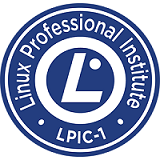Categories: Linux administration, Linux (LPI)
The basics of using Linux as an administrator and the fundamental tools an administrator needs : console, commands, text editors, system architecture, permissions, system setup, configuration.

Training is authorized by Linux Professional Institute
This training is a first part of our LPIC-1 certification path – the suggested continuation is the LPI-102 training. Learning material covered by these two training courses allows to pass the LPIC-1 exam.
To persons interested in acquiring the complete knowledge required by LPIC-1 exam from the very basics, we recommend our long course Linux Administrator. It not only covers all the material covered by LPI 101 and LPI 102 training courses – it has also a module on selected network services, and costs less than the two training courses combined.
This training is equivalent to the first four days of the Linux Administrator course.
Duration
5 days
Agenda
- Linux console: the basics
- the most important commands
- basic administration tools at a glance: mc and vim
- The file system – where and what to look for
- General principles of the system
- users, groups and access rights (basics)
- processes
- boot procedure
- how system components are connected:
- pseudo-files
- network ports
- configuration files and logs
- signals
- static and dynamic links
- names, functions and characteristics of each part of the system
- how to setup the system (configuration via GUI, text and scripts)
- Working in the shell:
- shell scripts
- core-utils
- sed
- Regular Expressions
- Vim
- The boot process
- differences between the distributions
- lilo and grub
- kernel parameters
- init and inittab, upstart
- startup scripts
- launch services
- Controlled installation
- installing the example distribution in expert mode
- nuances: authentication, partitioning
- Software installation
- configure, make, make install
- rpm and deb
- apt and yum
- Processes
- outline of the operating systems theory
- system monitoring
- signals
- loading libraries, tracking execution
- Operating System vs Hardware:
- device files, logging
- lspci, lsusb, hotplug
- udev
- Administrator’s view on system architecture
- kernel, modules, libraries
- providing context for the rest of the course
- Administrator’s view on the filesystem
- where to find binaries, libraries, configuration files, logs, data, documentation etc.
- /proc file system
- The file system
- file types
- permissions (suid etc.)
- creating a file system (mkfs. *, mkisofs)
- mount – practical aspects: fat and other file systems, -o loop, choosing a file system
Audience and prerequisites
From participants we do not require any experience with Linux, but only general familiar with Windows (efficient system management, common programs and the Internet).
Certificates
Course participants receive completion certificates signed by ALX.